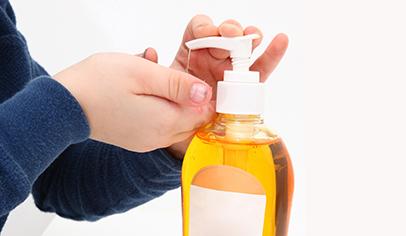Encourage Healthy Habits at School

Schools can be breeding grounds for the viruses that cause colds, the flu, and other illnesses. Here’s how PTOs can help fight germs to keep kids in class.
When cold and flu season starts, schools can become germy places. With each uncovered cough or sneeze, germs spray through the air, settling on desks and doorknobs.
The rapid spread of germs at school can make teachers and students sick, causing students to fall behind in their studies and teachers to lose valuable instructional time. In some cases, schools close to limit the school community's exposure to to a contagious illness.
As the new coronavirus that causes the illness COVID-19 has spread, some schools have cancelled classes to limit coronavirus transmission, while other schools are making plans in case the coronavirus spreads to their community. Parent groups can be important players in the fight against illness, too, by providing supplies and raising awareness of good hygiene habits.
How Germs Spread
Germs, a term that includes viruses, bacteria, parasites, and fungi, cause many types of illness, such as the common cold and flu. According to the Centers for Disease Control and Prevention, nearly 22 million school days are lost annually because of the common cold.
Besides colds, food-borne illnesses are common among schoolchildren. Certain strains of E. coli, salmonella, and other bacteria can live on certain surfaces for up to two hours or even longer.
Germs spread through the air when someone coughs or sneezes without covering their mouth, but they are too heavy to stay airborne for long. They land on surfaces like tables, doorknobs, lockers, light switches, faucets, the backs of chairs, and computer keyboards and mice. When someone touches an infected surface and then uses the same hand to rub their eyes, scratch their nose, or put something into their mouth, bacteria is introduced through the mucous membranes and viruses begin their infestation.
Germs can also spread from person to person. Children who are sick or pick up germs from touching an infected surface may pass the germs to others through hand-to-hand contact.
Keep Germs at Bay
Talk with your principal and school nurse about what your parent group can do to help fight the spread of germs in the school building. “Preventing the spread of germs is always cheaper than closing schools to disinfect, replacing teachers who are out sick, and catching kids up who are behind due to illness,” says Angil Tarach-Ritchey, a registered nurse in Ann Arbor, Mich.
One easy way to combat germs is to add disinfectant duty to any PTO work days you have scheduled. Recruit parents to disinfect water fountains, staircase railings, and classroom pencil sharpeners, for example.
If your parent group has the funds, consider buying supplies that can be used in classrooms to help reduce sickness. Be sure to coordinate your efforts with the appropriate school staff members. For example, a PTO might:
Provide disinfectant wipes for the computer lab and for classroom computers.
Buy extra school supplies so students don’t have to borrow from each other.
Install sanitizing hand gel stations in each classroom.
Supply boxes of tissues for each classroom.
Note: When purchasing cleaning or hand-washing supplies, be aware that antibacterial products should be avoided. The overuse of antibacterial products may lead to bacterial resistance.
Promote Good Hygiene
Parent groups can help educate students about the importance of good hygiene habits. One way to do that is to purchase kits teachers can use to show students the power of hand-washing: Children are asked to wash their hands as thoroughly as possible. Then a UV light reveals all the bacteria they missed.
This type of demonstration is meaningful for students, says Deb Robarge, a school nurse in Indianapolis. “The more visual the aid, the better for young students,” she explains.
PTO leaders can download posters about hand-washing and covering coughs and sneezes from the PTO Today File Exchange. Place them around the school at children’s eye level.
Coordinating with room parents is another way to raise awareness of germs in the classroom. Remind room parents of the ways germs are spread, and ask them to coach students to use proper hygiene. Download a poster for room parents from the File Exchange.
As a PTO leader, you can also be a role model for the students at your school. When you wash your hands, use soap and water and lots of friction. Make the hand-washing last as long as it takes to sing the “Happy Birthday” song twice (silently, if you wish), then dry your hands thoroughly.
Additional Resources
-
If your custodian does a remarkable job of keeping your school clean, you can nominate him for a National C.L.E.A.N. Award from the American Cleaning Institute and other partners. ACI also sends out free hand-washing bookmarks; request those by emailing
education@cleaninginstitute.org . -
The CDC offers a great deal of educational materials for schools, including how to prevent the flu.
-
The U.S. Department of Health and Human Services provides links for information about children’s immunizations and vaccines.
-
Oct. 15 has been declared Global Handwashing Day. For ideas on how to celebrate at your school, visit www.globalhandwashingday.org. Washing hands with soap effectively prevents diarrheal diseases, limits the transmission of respiratory diseases, and combats worms, eye infections, and skin infections.
Originally posted in 2010 and updated regularly.






















